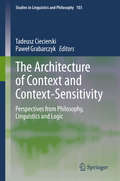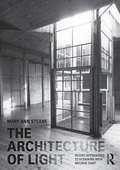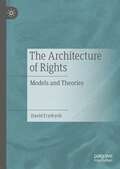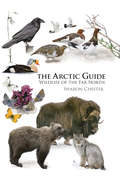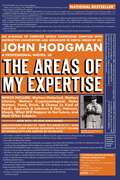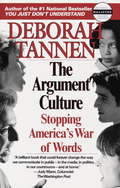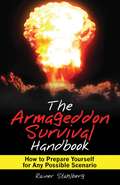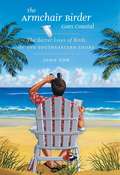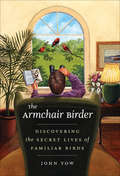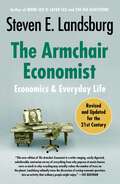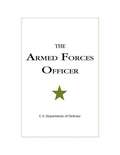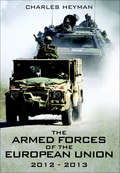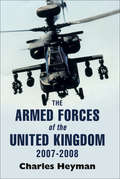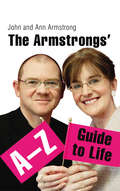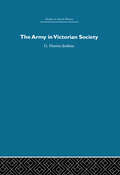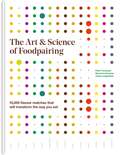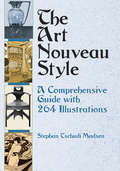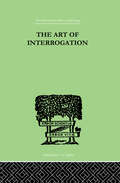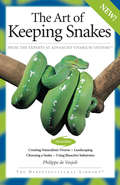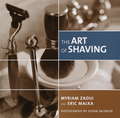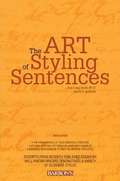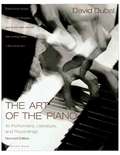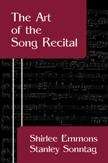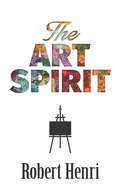- Table View
- List View
The Architecture of Context and Context-Sensitivity: Perspectives from Philosophy, Linguistics and Logic (Studies in Linguistics and Philosophy #103)
by Paweł Grabarczyk Tadeusz CiecierskiThis volume addresses foundational issues of context-dependence and indexicality, which are at the center of the current debate within the philosophy of language. Topics include the scope of context-dependency, the nature of content and the character of input data of cognitive processes relevant for the interpretation of utterances. There's also coverage of the role of beliefs and intentions as contextual factors, as well as the validity of arguments in context-sensitive languages.The contributions consider foundational issues regarding context-sensitivity from three different, yet related, perspectives on the phenomenon of context-dependence: representational, structural, and functional. The contributors not only address the representational, structural and/or functional problems separately but also study their mutual connections, thus furthering the debate and bringing competing approaches closer to unification and consensus. This text appeals to students and researchers within the field.This is a very useful collection of essays devoted to the roles of context in the study of language. Its essays provide a useful overview of the current debates on this topic, and they put forth novel contributions that will undoubtedly be of relevance for the development of all areas in philosophy and linguistics interested in the notion of context. Stefano Predelli Department of Philosophy, University of Nottingham, Nottingham, UK
The Architecture of Light: Recent Approaches to Designing with Natural Light
by Mary Ann SteaneReviewing the use of natural light by architects in the era of electricity, this book aims to show that natural light not only remains a potential source of order in architecture, but that natural lighting strategies impose a usefully creative discipline on design. Considering an approach to environmental context that sees light as a critical aspect of place, this book explores current attitudes to natural light by offering a series of in-depth studies of recent projects and the particular lighting issues they have addressed. It gives a more nuanced appraisal of these lighting strategies by setting them within their broader topographic, climatic and cultural contexts.
The Architecture of Rights: Models and Theories
by David FrydrychWhat is a right? What, if anything, makes rights different from other features of the normative world, such as duties, standards, rules, or principles? Do all rights serve some ultimate purpose? In addition to raising these questions, philosophers and jurists have long been aware that different senses of ‘a right’ abound. To help make sense of this diversity, and to address the above questions, they developed two types of accounts of rights: models and theories. This book explicates rights modelling and theorising and scrutinises their methodological underpinnings. It then challenges this framework by showing why the theories ought to be abandoned. In addition to exploring structural concerns, the book also addresses the various ways that rights can be used. It clarifies important differences between rights exercise, enforcement, remedying, and vindication, and identifies forms of legal rights-claiming and rights-invoking outside of institutional contexts.
The Arctic Guide: Wildlife of the Far North
by Sharon ChesterThe Arctic Guide presents the traveler and naturalist with a portable, authoritative guide to the flora and fauna of earth's northernmost region. Featuring superb color illustrations, this one-of-a-kind book covers the complete spectrum of wildlife--more than 800 species of plants, fishes, butterflies, birds, and mammals--that inhabit the Arctic's polar deserts, tundra, taiga, sea ice, and oceans. It can be used anywhere in the entire Holarctic region, including Norway's Svalbard archipelago, Siberia, the Russian Far East, islands of the Bering Sea, Alaska, the Canadian Arctic, and Greenland. Detailed species accounts describe key identification features, size, habitat, range, scientific name, and the unique characteristics that enable these organisms to survive in the extreme conditions of the Far North. A color distribution map accompanies each species account, and alternative names in German, French, Norwegian, Russian, Inuit, and Inupiaq are also provided. Features superb color plates that allow for quick identification of more than 800 species of plants, fishes, butterflies, birds, and mammals Includes detailed species accounts and color distribution maps Covers the flora and fauna of the entire Arctic region
The Areas of My Expertise
by John HodgmanIn the great tradition of the American almanac, The Areas of My Expertise is a brilliant and hilarious compendium of handy reference tables, fascinating trivia, and sage wisdom on all topics large and small. Although bestsellers such as Poor Richard&’s Almanack and The Book of Lists were certainly valuable, they also were largely true. Here is a different kind of handy desk reference, one in which all of the historical oddities and amazing true facts are sifted through the singular, illuminating imagination of John Hodgman—which is the nice way of saying: He made it all up.John Hodgman brings his considerable expertise to bear in answering all of the questions book buyers have been asking:-What are the mottoes of the 51 United States?THE ANSWER IS PROVIDED-Who were the U.S. presidents who had hooks for hands?THE ANSWER IS PROVIDED-What role does the Yale secret society &“Skull and Bones&” play in the secret world government?THERE IS NO SECRET WORLD GOVERNMENT-What was the menu at the first Thanksgiving, and did it include eels?Technically, that is two questions, but do not apologize, for John Hodgman shall answer them both . . . LATER.-Aside from a compendium of fake trivia, what is the best kind of book to write?A SIMPLE TABLE OF THE 55 MOST DRAMATIC LITERARY SITUATIONS PROVIDES THE ANSWER, and John Hodgman is the author of that table.Imagine if The Book of Lists had been rewritten by Peter Cook and Jorge Luis Borges under the pseudonym of &“John Hodgman&” and then renamed The Areas of My Expertise, and you will only begin to have a sense of the dizzying, uproarious, sublimely weird, and strangely wise journey that is contained within this book (along with all the pages and words).Perfect for anyone who thirsts for knowledge, and especially for collectors of books of fake trivia, The Areas of My Expertise offers through absurdity a better understanding of the world we share—and recognizes that while the truth may be stranger than fiction, it is never as strange as lies . . . or as true.Look out for John Hodgman's latest book, Vacationland, available from Viking in Fall 2017.
The Argument Culture
by Deborah TannenDeborah Tannin is perhaps most famous for her descriptions in the differences in how men and women use language and interact with each other in the workplace. In this, her newest book, Ms. Tannin turns her keen linguistic eye -- and ear -- on "the Argument culture". Her contention is that modern American culture tends to promote argument for argument's sake, that we're often too busy yelling at each other to listen to each other. Using examples as diverse as Whitewater and Greek culture, she contends that both sides can, in fact, be right, and that there are, in fact, usually more than two sides to an argument. This book is a must read and should be required reading for all politicians, lawyers -- for everyone.
The Armageddon Survival Handbook: How to Prepare Yourself for Any Possible Scenario
by Rainer StahlbergGrowing up in Soviet-dominated Hungary, Rainer Stahlberg developed an increasing wariness of the world around him. When he was wounded in the Hungarian uprising of 1956, he resolved to never be caught unprepared again. Let him prepare you for any crisis. Here he details a step-by-step plan for surviving a vast range of disasters--both natural and manmade. From storms and floods to economic strife, nuclear warfare, and international terrorism, this is the ultimate handbook of disaster scenarios and survival techniques. Be ready for an energy crisis, global economic collapse, climate change, and a multitude of other terrifying-to-think-about scenarios. This book could save your life!
The Armchair Birder Goes Coastal
by John YowWith his distinctively witty, anecdotal, and disarming voice, John Yow now journeys to the shore and shares his encounters with some of the most familiar and beloved coastal birds. Out of his travels--from North Carolina's Outer Banks, down the Atlantic coast, and westward along the Gulf of Mexico--come colorful accounts of twenty-eight species, from ubiquitous beach birds like sanderlings and laughing gulls to wonders of nature like roseate spoonbills and the American avocets. Along the way, Yow delves deeply into the birds' habits and behaviors, experiencing and relating the fascination that leads many an amateur naturalist to become the most unusual of species--a birder.Seasonally organized chapters explore the improbable, the wonderful, and the amusing aspects of these birds' lives. Yow embellishes his observations with field notes, anecdotes, and stories from some of America's finest naturalists--including John James Audubon, Arthur Cleveland Bent, Rachel Carson, and Peter Matthiessen. Combining the endless fascination of bird life with the pleasure of good reading, The Armchair Birder Goes Coastal is the perfect companion for any nature lover's next trip to the beach.
The Armchair Birder's Omnibus Ebook
by John YowAvailable for the first time together in this Omnibus E-Book, The Armchair Birder's Omnibus brings together both of John Yow's delightful books into one convenient e-book.While birding literature is filled with tales of expert observers spotting rare species in exotic locales, John Yow reminds us in The Armchair Birder, that the most fascinating birds can be the ones perched right outside our windows. In thirty-five engaging and sometimes irreverent vignettes, Yow reveals the fascinating lives of the birds we see nearly every day. Following the seasons, he covers forty-two species, discussing the improbable, unusual, and comical aspects of his subjects' lives. Yow offers his own observations, anecdotes, and stories as well as those of America's classic bird writers, such as John James Audubon, Arthur Bent, and Edward Forbush. This unique addition to bird literature combines the fascination of bird life with the pleasure of good reading.In his follow-up volume The Armchair Birder Goes Coastal, Yow now journeys to the shore and shares his encounters with some of the most familiar and beloved coastal birds. Out of his travels--from North Carolina's Outer Banks, down the Atlantic coast, and westward along the Gulf of Mexico--come colorful accounts of twenty-eight species, from ubiquitous beach birds like sanderlings and laughing gulls to wonders of nature like roseate spoonbills and the American avocets. Along the way, Yow delves deeply into the birds' habits and behaviors, experiencing and relating the fascination that leads many an amateur naturalist to become the most unusual of species--a birder.
The Armchair Birder: Discovering the Secret Lives of Familiar Birds
by John YowBird lovers, take heart! While the birding literature is filled with tales of expert observers spotting rare species in exotic locales, John Yow's The Armchair Birder reminds us that the most fascinating birds can be the ones perched right outside our windows. In thirty-five engaging, humorous, and even irreverent essays, Yow reveals the fascinating lives of birds you probably already recognize and naturally want to know more about--because they're the ones you see nearly every day. Following the seasons of the year, Yow covers forty-two species, from the Carolina wren that rings in the springtime to the sandhill crane croaking high overhead at the end of winter. Leisurely and entertaining, the essays explore the improbable, unusual, and comical aspects of their subjects' lives--from the philandering of the ruby-throated hummingbird to the occasional dipsomania of the cedar waxwing. Rather than bare facts and field marks, The Armchair Birder offers observations, anecdotes, and stories--not only Yow's own, but also those of America's classic bird writers, such as John James Audubon, Arthur Bent, and Edward Forbush, experts who saw it all and wrote with wit and passion. With The Armchair Birder, backyard birders will take new delight in the birds at their feeders, while veteran check-listers will enjoy putting their feet up. All will applaud this unique addition to bird literature, one that combines the fascination of bird life with the pleasure of good reading.
The Armchair Economist: Economics & Everyday Life (revised and updated May #2012)
by Steven E. LandsburgThe extensively revised and updated edition of Steven Landsburg’s hugely popular book, The Armchair Economist—“a delightful compendium of quotidian examples illustrating important economic and financial theories” (The Journal of Finance).In this revised and updated edition of Steven Landsburg’s hugely popular book, he applies economic theory to today’s most pressing concerns, answering a diverse range of daring questions, such as: Why are seat belts deadly? Why do celebrity endorsements sell products? Why are failed executives paid so much? Who should bear the cost of oil spills? Do government deficits matter? How is workplace safety bad for workers? What’s wrong with the local foods movement? Which rich people can’t be taxed? Why is rising unemployment sometimes good? Why do women pay more at the dry cleaner? Why is life full of disappointments? Whether these are nagging questions you’ve always had, or ones you never even thought to ask, this new edition of The Armchair Economist turns the eternal ideas of economic theory into concrete answers that you can use to navigate the challenges of contemporary life.
The Armed Forces Officer
by U.S. Department of DefenseThis edition is a classic series of books of the same title. These books have provided a foundation of thought, conduct, standards, and duty for American commissioned officers. Available now to the general public, this new edition takes the series inspirational premise into the new century. It educates officers of all services, as well as civilians, about the fundamental moral-ethical requirements of being a commissioned officer in the armed forces of the United States.
The Armed Forces of the European Union, 2012–2013
by Charles HeymanThis first edition of an entirely new publication will, for the first time, provide comprehensive information on what is one of the worlds largest military force groupings. The European Unions 25 member states have defense forces that include over 1.6 million personnel and inventories that include over 35,000 armored vehicles, 2,000 combat aircraft, 60 submarines and over 140 major surface vessels.Chapters will include important facts and figures related to European defense, detail concerning the European Union Military Committee and the European Defense Agency. Also included will be information about European Union military roles, the Eurocorps and European Union Battlegroups. In addition, there will be detail regarding the force structure of the 25 member states and characteristics of the major land, sea and air equipment.
The Armed Forces of the United Kingdom, 2007–2008
by Charles HeymanThis comprehensive pocket guide includes full and up-to-date details of all British military organizations and structures. This edition includes detail regarding all of the UK MoDs latest future force proposals.The Armed Forces of the United Kindom 2007–2008 is an invaluable reference tool and essential reading for all those who wish to be informed of the current state of the UKs defence forces.
The Armstrongs' A-Z Guide to Life
by Ann Armstrong John ArmstrongHave you ever wondered how typewriters can rival commercial radio? Why, according to John, it's best to shave only once a week, and with old fashioned soap and water? And what the various repercussions of spring and its extra hour of daylight bring?The BBC created a fantastically cult television series when they filmed the daily operations of John and Ann's double glazing firm U-Fit, the third largest in Coventry. It was here we were first introduced to John's misanthropic musings and no-nonsense attitude to management and his wife Ann's doting loyalty. Now their individual and highly entertaining personalities have been brought to the page, as they ruminate on various aspects of life from asbos to Buddhism, and Chekov to Maltesers.
The Army in Victorian Society
by G. Harries-JenkinsAlthough in Victorian society the Army was the aristocratic backbone of England, it was persistently engaged in fighting Colonial Wars.
The Art & Science of Foodpairing: 10,000 Flavour Matches That Will Transform The Way You Eat
by Peter Coucquyt Bernard Lahousse Johan Langenbick"We build tools to create culinary happiness" - Foodpairing.com "There is a world of exciting flavour combinations out there and when they work it's incredibly exciting" - Heston BlumenthalFoodpairing is a method for identifying which foods go well together, based on groundbreaking scientific research that combines neurogastronomy (how the brain perceives flavour) with the analysis of aroma profiles derived from the chemical components of food.This groundbreaking new book explains why the food combinations we know and love work so well together (strawberries + chocolate, for example) and opens up a whole new world of delicious pairings (strawberries + parmesan, say) that will transform the way we eat. With ten times more pairings than any other book on flavour, plus the science behind flavours explained, Foodpairing will become THE go-to reference for flavour and an instant classic for anyone interested in how to eat well.Contributors:Astrid Gutsche and Gaston Acurio - Astrid y Gaston - PeruAndoni Luiz Aduriz - Mugaritz - SpainHeston Blumenthal - The Fat Duck - UKTony Conigliaro - DrinksFactory - UKSang Hoon Degeimbre - L'Air du Temps - BelgiumJason Howard - #50YearsBim - UK/CaribbeanMingoo Kang - Mingles - KoreaJane Lopes & Ben Shewry - Attica - AustraliaVirgilio Martinez - Central - PeruDominique Persoone - The Chocolate Line - BelgiumKarlos Ponte - Taller - Venezuela/DenmarkJoan Roce - El Celler de Can Roca - SpainDan Barber - Blue Hill at Stone Barns - USAKobus van der Merwe - Wolfgat - South AfricaDarren Purchese - Burch & Purchese Sweet Studio - MelbourneAlex Atala - D.O.M - BrazilMaría José San Román - Monastrell - SpainKeiko Nagae - Arôme conseil en patisserie - Paris
The Art Nouveau Style: A Comprehensive Guide with 264 Illustrations
by Stephan Tschudi MadsenA revolutionary reaction to traditional nineteenth-century art, the turn-of-the-century Art Nouveau movement drew much of its inspiration from nature. Applying its sinuous, curvilinear motifs to the decorative arts, graphics, architecture, sculpture, and painting, artists and craftspeople attempted to create a style suitable for a "modern" age. In this absorbing, exceptionally detailed, and well-researched book (one of the first scholarly works to revive interest in the style after World War II), a noted Norwegian authority on the subject examines the movement in depth. Stephan Madsen offers a wealth of facts and insights about the origins and development of the style; trends leading up to Art Nouveau, including the influence of Blake and the Pre-Raphaelites; early Art Nouveau posters and book illustrations; and its use in architectural ornamentation, furniture, jewelry, wrought-iron, glass, and other applied arts. A magnificent selection of 264 photographs and line drawings accompanies the text, which gives broad coverage to the movement, as well as insightful discussions of such important artists as Emile Gallé, Alphonse Mucha, Walter Crane, Charles Rennie Mackintosh, Aubrey Beardsley, Henry Van de Velde, Victor Horta, William Morris, and Eugène Grasset.Artists and students, admirers of Art Nouveau, and anyone interested in this enduring and influential style will welcome Professor Madsen's expert, fully documented study.
The Art Of Interrogation: Studies in the Principles of Mental Tests and Examinations (International Library Of Psychology Ser.)
by Hamilton, E RFirst published in 1999. Routledge is an imprint of Taylor & Francis, an informa company.
The Art Of Keeping Snakes
by Philippe De VosjoliFor author Philippe de Vosjoli, "art is the actualization of a personal vision or message," and de Vosjoli's passion is snakes, which he believes are among the most beautiful animals on earth. Incorporating snakes into a naturalistic vivarium, the way lizards and amphibians usually are, adds a new element to snake keeping, elevating the hobby to a true art form. In The Art of Keeping Snakes, de Vosjoli pursues this concept and provides advice for snake keepers who wish to create beautiful displays for their snakes, putting the animals' welfare and quality of life above all else and simultaneously enhancing their own enjoyment in observing their beautiful snakes in naturalistic environments. Beautifully photographed, inspiring, and informative, The Art of Keeping Snakes is divided into two parts, the first "A New Way to Keep Snakes," discusses design planning, enclosures and background possibilities, substrates, landscaping, plants, heating/lighting, quarantine and introducing the snakes to the vivarium. This part also includes chapters on feeding, handling, health care, and general maintenance and husbandry. The second part, "Best Display Snakes," presents over thirty different snakes, including photographs, physical descriptions, and tips for selection, handling, vivarium design tips, feeding, and breeding. The snakes in this part are divided into chapters, categorized by pythons, boas, water and garter snakes, hognose snakes, rat snakes, kingsnakes and milksnakes, and others. Resources and index included.
The Art Of Shaving
by Myriam Zaoui Eric MalkaThe average man will shave approximately 20,000 times over the course of his life, spending the equivalent of 139 full days doing it. He will shave off 27 feet of hair, from a total of 30,000 whiskers on his face. And he will probably be doing something wrong. So he’ll suffer nicks and cuts, ingrown hairs, and rashes; his five-o’clock shadow will arrive before lunch, his neck will be irritated and red, and he’ll get razor burn. Instead of reaping the benefits of a daily grooming regimen, he’ll only suffer. Needlessly. The Art of Shavingwill solve his problems (as well as the related problems of anybody whose cheek gets burned by his razor stubble). He’ll choose the correct brush and razor and blade; he’ll take more time lathering up properly and less time tending to bloody shirt collars. He’ll feel better and look better. And he’ll adjust his perception of this morning ritual, bringing art and passion to a daily routine.
The Art Of Styling Sentences
by Ann Longknife K. D. SullivanConventions of writing style change in subtle ways with passing years--a fact that prompts the need for periodic revisions of books like this one. The authors review the fundamentals of good sentence structure and then go on to describe twenty basic sentence patterns that encompass virtually every effective way of writing sentences in English. They also draw on passages by current prominent writers, using these examples to show how varying rhythm and sentence patterns can result in elegant writing styles that keep their readers interested. Exercises with answers and explanations appear throughout the text.
The Art Of The Piano: Its Performers, Literature And Recordings
by David DubalAlong with "careful judgement and genuine love of the subject" (Library Journal), David Dubal brings unparalleled expertise as a concert pianist, Juilliard faculty member, and former music director of a major classical music station to this second edition of his definitive guide to the piano. Here are enlightening profiles of history's greatest concert pianists from Clementi and Mozart to the major artists of the twentieth century. Here, too, in alphabetical order by composer, are the masterpieces of the literature, solo and concerto, a discussion of the place of each piece in the composer's oeuvre, and a list of recorded performances that "show the composition in its most diverse moods." Updated to include more than seventy additional pianists and hundreds of new CDs, this is a guide piano teachers, concert-goers, and other devotees of keyboard virtuosity should find "among the best read and most useful books on their personal reference shelves" (Booklist).
The Art Of The Song Recital
by Shirlee Emmons Stanley SonntagThe definitive work in its field! Since its original publication, the Emmons-Sonntag text has continually stood out as the definitive work on the song recital. The book presents imaginative advice and practical techniques for producing successful recitals and kindling audience excitement. Every aspect of the recital is covered, from building programs and the use of acting skills to the relationship between the singer and the accompanist. Singers of all levels and backgrounds will benefit from the authors' vast experience in the performance of song recitals as a singer/accompanist team. The comprehensive repertoire lists, now organized by voice and instrumentation as well as by composer, appeal to both students and professional musicians. Readers will agree that the authors have met their goal of providing "extensive, thoroughgoing, and definitive insights into the attributes that can render the song recital at once a great art and a magnificent entertainment."
The Art Spirit: Notes, Articles, Fragments Of Letters And Talks To Students, Bearing On The Concept And Technique Of Picture Making, The Study Of Art Generally, And On Appreciation
by Robert Henri Margery A. Ryerson"I would give anything to have come by this book years ago. It is in my opinion comparable only to the notes of Leonardo and Sir Joshua . . . One of the finest voices which express the philosophy of modern men in painting." — George BellowsA well-respected American artist, Robert Henri was also a gifted and influential teacher who attracted a large and devoted group of disciples. The Art Spirit, compiled by one of his former students, offers an unparalleled record of Henri's thoughts and theories. Essays, lectures, and notes not only embody the practical techniques of his approach to painting, but also articulate his belief that the joy and wisdom of the creative process are vital and accessible to everyone.The Art Spirit presents the entire system of Henri's teaching, complete with technical advice and critical comments, and will appeal to readers who delight in all forms of the arts. This classic guide offers information and inspiration for students, teachers, and professionals.
